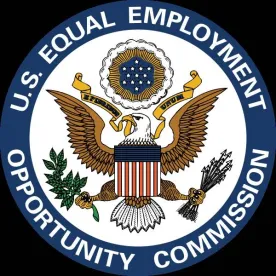On May 15, 2023, in response to the end of the COVID-19 Public Health Emergency Declaration, the EEOC updated its COVID-19 technical assistance: “What You Should Know About COVID-19 and the ADA, the Rehabilitation Act, and Other EEO Laws”. This guidance has now been updated roughly twenty times since the start of the pandemic. The EEOC’s recent update to its informal guidance appears to give employers permission to continue with many of their COVID-19 practices and protocols, despite the May 11, 2023 end of the Public Health Emergency.
While the EEOC reminds employers that medical exams and inquiries must be job related and consistent with business necessity, according to the EEOC: “the ‘business necessity’ standard allows for consideration of whether a person may have COVID-19, and thus might pose a ‘direct threat.’” As a result, the EEOC continues to allow employers to follow the CDC guidance but warns that “guidance from medical and public health authorities may be relevant to making certain legal determinations under one or more EEO laws (e.g., “direct threat” under the ADA). Because changes in such guidance may impact the legal assessments made under Title I of the ADA and other EEO laws … the EEOC recommends that employers … routinely check for guidance updates from CDC, FDA, and other medical and public health authorities.” Below are some of the points raised by the EEOC in the updated guidance:
-
“The ADA does not prevent employers from following CDC advice.” (A4)
-
If an employee calls in sick or reports feeling sick at work, an employer may ask whether the employee has COVID-19 or common symptoms of COVID-19 as identified in CDC guidance. (A1, A12)
-
Employers may still ask all employees entering the worksite or working in close proximity to others if they have COVID-19 or COVID-19 symptoms, if they have been COVID-19 tested and if so, the results. (A8)
-
If an employee has COVID-19 or COVID-19 symptoms, employers may follow CDC recommended isolation guidance. (A4)
-
Employers must maintain all information about employee illness as confidential medical records in compliance with the ADA. (A1)
-
Measuring an employee’s body temperature or requiring an employee to undergo COVID-19 viral testing are medical examinations. Requiring medical examinations and making disability-related questions must meet the “business necessity” standard. It is important for the employer to consider why it wishes to require a medical examination. (A3, A9)
-
The ADA doesn’t prevent employers from following CDC recommendations regarding whether, when and for whom testing or other medical screening is appropriate. According to the EEOC, following CDC recommendations will meet the ADA “business necessity” standard. (A9)
-
An employer may ask employees coming into the worksite whether they have had contact with “anyone” diagnosed with COVID-19 or who may have symptoms associated with the disease. But only asking about an employee’s contact with family members would create a GINA issue and would unnecessarily limit the information obtained about an employee’s potential exposure to COVID-19. (A10)
-
Employers can ask employees about domestic or international travel as these are not disability-related inquiries, but if the employer wants to require testing of individuals who have traveled, it must meet the business necessity standard. (A14)
-
According to the EEOC, the possible types of reasonable accommodations to address Long COVID vary, depending on a number of factors, including the nature of the symptoms, the job duties, and the design of the workplace. The EEOC provided the following examples of possible accommodations: a quiet workspace, use of noise cancelling or white noise devices, and uninterrupted worktime to address brain fog; alternative lighting and reducing glare to address headaches; rest breaks to address joint pain or shortness of breath; a flexible schedule or telework to address fatigue; and removal of “marginal functions” that involve physical exertion to address shortness of breath. The Job Accommodation Network has information on a variety of possible accommodations. (D17)
-
The end of the Public Health Emergency declaration does not automatically provide grounds to terminate reasonable accommodations that may continue to be needed to address ongoing circumstances (e.g. continued high risk to individuals with certain disabilities if they contract COVID-19 as discussed in CDC guidance). However, employers may engage in the interactive process to determine if, on an individualized basis, they are still necessary and whether alternative accommodations might meet those needs. (D20)
-
The EEOC reminds employers that harassing an employee with a disability-related need to wear a mask or take other COVID-19 precautions or harassing an employee who is receiving a religious accommodation to forgo mandatory vaccination may violate Equal Employment Opportunity laws.
What should employers do? The EEOC’s updated guidance allows, but does not require, employers to continue some of the COVID-19 protocols that were in place during the pandemic. It remains to be seen how much deference courts will give to the EEOC’s informal guidance, and as the EEOC recognizes, it is subject to change based on changing circumstances and guidance from the CDC and other public health authorities. What is certain is that COVID-19 litigation is expected to continue due to the strong and divergent views on the issues and, as a result, employers should carefully think through their practices to determine whether they still make sense for their workforce due to current circumstances.






 />i
/>i

